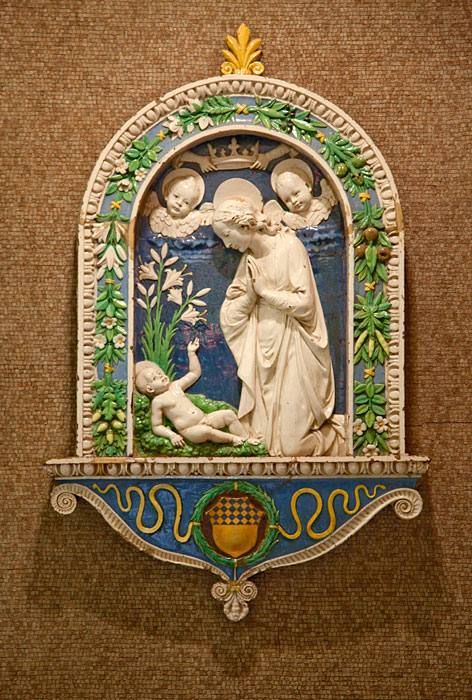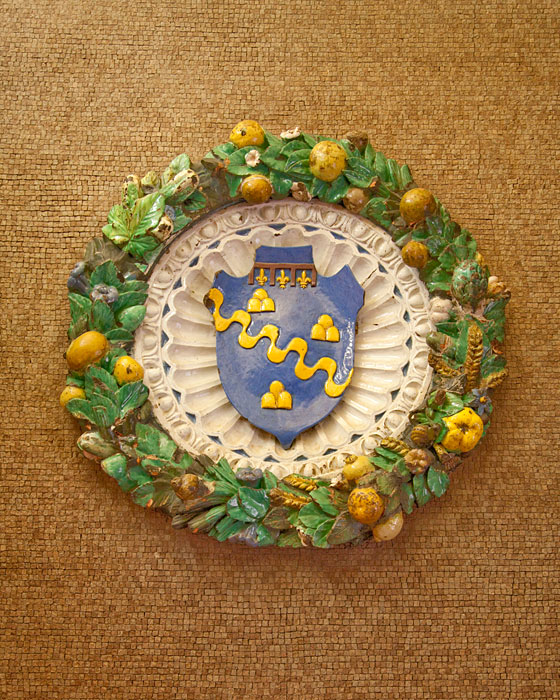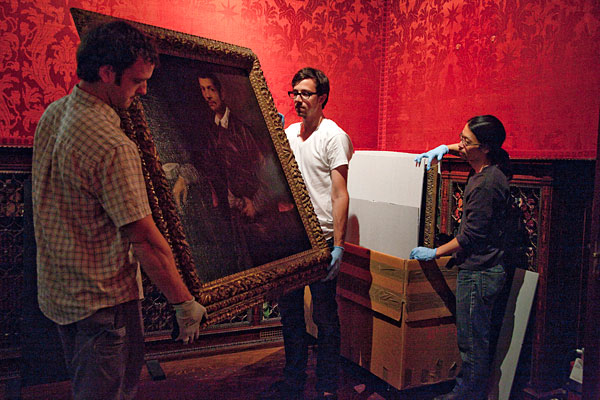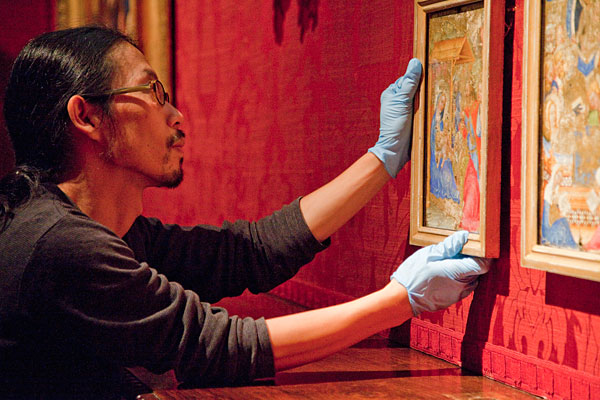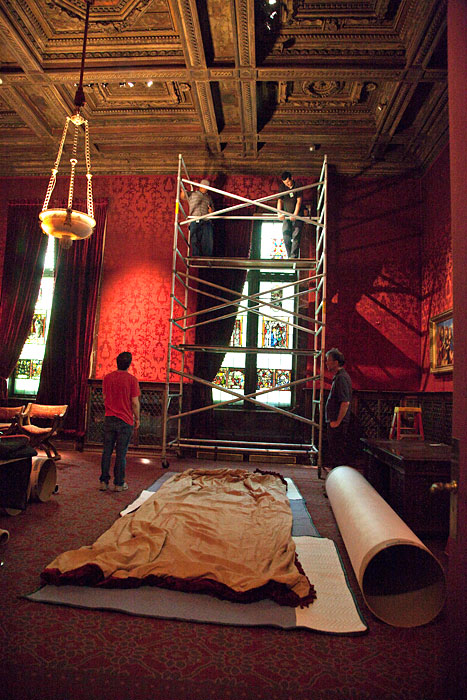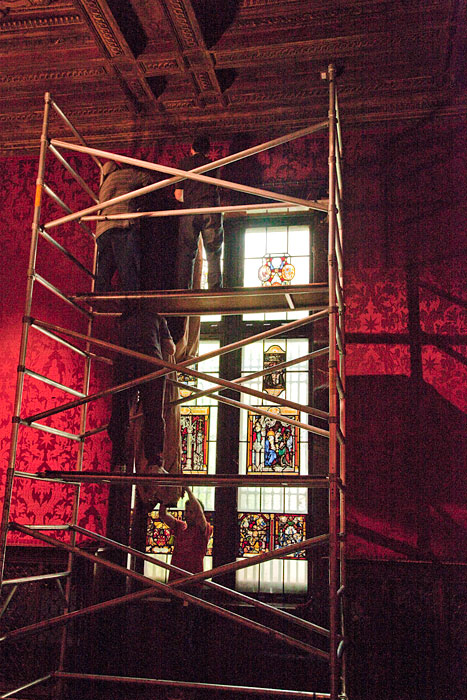
June 11, 2010
Packing and Storing
Preparing J. Pierpont Morgan’s Library interior for restoration requires extensive work. Space must be found in the Morgan's vault for storage of many of the smaller objects and paintings. Each object has to be carefully removed, packed, and stored. Conservators de-install the Gutenberg bible from its case in the East Room while technicians measure art objects and furniture so they can construct custom-built protection. Larger items items and furniture are transported to offsite storage.
The Registrar's office coordinates the packing and removal of material and the protection of some artwork left in situ, such as the sixteenth-century relief sculptures from the della Robbia workshop that decorate the walls of J. Pierpont Morgan’s Library. The ones in the current entrance to the building were installed by Pierpont Morgan's son, J. P. Morgan, Jr., or Jack, who had them returned from storage at the Metropolitan Museum and set into the walls using cement.
Packing Art in the Era of J. P. Morgan
Morgan himself was no stranger to packing and shipping art collections. In 1909 the United States lifted the heavy twenty-percent import duty on works of art. Morgan took this opportunity to pack and ship his vast collection of art that was stored in England to America. The packing and shipping of approximately 351 cases went on for an entire year beginning in February 1912. One shipment, fortunately not ready in time, missed its transatlantic voyage on one of Morgan's favored White Star Line ships, the Titanic.
Furniture Conservation
While many of the objects in the J. Pierpont Morgan’s Library date from the Renaissance, the beautifully carved furniture dates from the first decade of the twentieth century. Morgan commissioned them for his library, and their craftsmanship is of the highest quality, which makes the furniture fit seamlessly into an interior finished by expert artisans. The settee, chairs, desk, desk chair, and end table in the study were custom-made in 1906 by Cowtan & Sons of London. The velvet-covered settee and chairs are in need of repair and will be sent to the upholsterer.
Mellon Conservator Patricia Reyes, who has cared for the Morgan's collections since 1964, is overjoyed at the conservation opportunities presented by the project: "In my nearly fifty years at the Morgan, we've never done a full refurbishment of J. Pierpont Morgan’s Library's interior. I've been mending the stitching on the sofa and chairs in Morgan's study for years, so it is a dream to have them reupholstered!"

